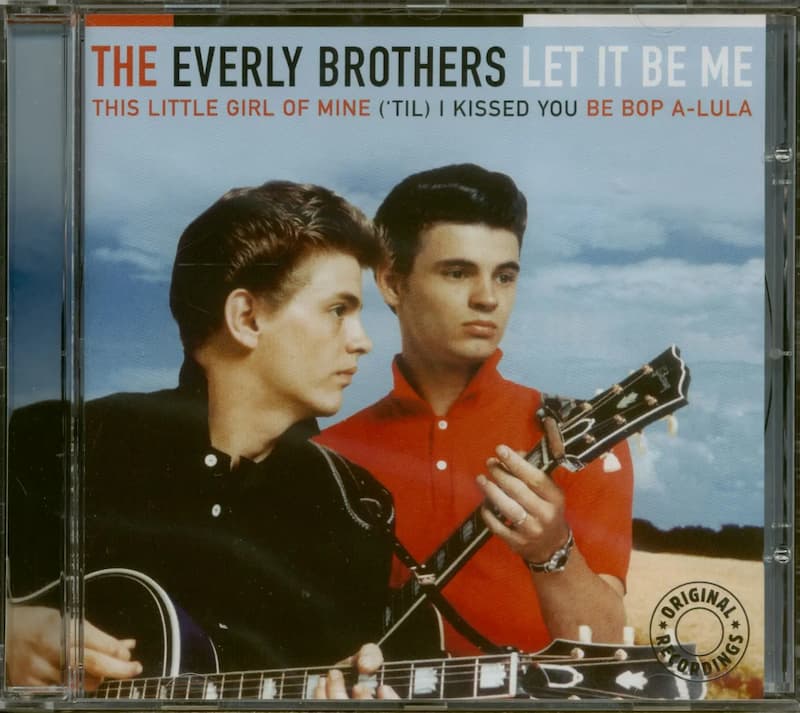
The legendary Everly Brothers, Don (1937-2021) and Phil Everly (1939-2014), left a profound mark on music from 1956 to 1973, and again from 1983 to 2005. Their decade-long break saw both artists exploring solo careers, but it was their reunion that echoed their trademark close harmonies and pioneering sound blending pop, country, and rock and roll. They were true trailblazers, giving birth to the country rock subgenre.
In diving deep into their catalogue, the struggle to pick just one gem from an ocean of classics was real. But the choice landed on the heartfelt anthem “Let It Be Me,” a song that radiates pure love and devotion. Unlike some earlier works, this song leans more on the enchanting solo vocal parts, enhanced beautifully by a delicate ensemble of strings, adding a rich, warm dimension that perfectly complements the emotion.
Interestingly, “Let It Be Me” was the first Everly Brothers record to incorporate strings, boasting an arrangement of eight violins and a cello, a novelty for pop tracks of the era. This poignant ballad is adapted from the 1955 French original, “Je T’Appartiens,” by Gilbert Becaud, Manny Kurtz, and Pierre Delanoe.
The song’s story includes its earliest English iteration by actress Jill Corey in 1957, who recorded it with Jimmy Carroll’s orchestra. While her version modestly peaked at #57, it laid the groundwork for what was to come.
Don Everly’s inspiration struck upon hearing an instrumental version on the 1959 album Chet Atkins In Hollywood. Enthralled by the melody, Don championed it wholeheartedly to producer Archie Bleyer. However, this sparked tension with Wesley Rose, the powerful owner of Acuff-Rose publishing and the Everlys’ own mentor, who resisted the idea. Don recalled:
“I went to Archie and told him I wanted to do it with strings. Wesley just sat there pouting through the whole session like a kid.”
Adding to the drama, the brothers severed ties with Cadence Records just before “Let It Be Me” soared to fame, switching to Warner Brothers with a hefty $100,000 signing bonus—an enormous sum at the time, equating to over $1 million in today’s dollars. This shrewd signing underscored Warner Bros.’ foresight, matching the song’s quality and the Everlys’ soaring appeal.
However, the harmony behind the scenes was not as smooth. Don and Phil’s relationship eventually fractured, driven by deep divides over political and life views—an all-too-familiar story in today’s polarized climate. In a rare 2014 interview with the Los Angeles Times, Don reflected on their musical bond:
“… it’s almost like we could read each other’s minds when we sang.”
Released as a single in 1960, “Let It Be Me” also graced the album The Fabulous Style of the Everly Brothers and appeared on countless compilations. Its legacy endures, dramatically reinterpreted by famed artists such as Bobbie Gentry and Glen Campbell, as well as by Jill Corey, whose version was the first English adaptation.
The lyrics capture an earnest plea for enduring love and loyalty:
I bless the day I found you
I want to stay around you
And so I beg you, let it be me
Don’t take this Heaven from one
If you must cling to someone
Now and forever, let it be me
Each time we meet, love
I find complete love
Without your sweet love
What would life be?
So never leave me lonely
Tell me you love me only
And that you’ll always, let it be me
Each time we meet love
I find complete love
Without your sweet love
What would life be?
So never leave me lonely
Tell me you love me only
And that you’ll always let it be me
“Let It Be Me” not only highlights the Everly Brothers’ profound musical talent but also reveals the intertwined complexities of family, artistry, and the ruthless music industry—all resonating with the raw emotional power that can only be found in timeless music.